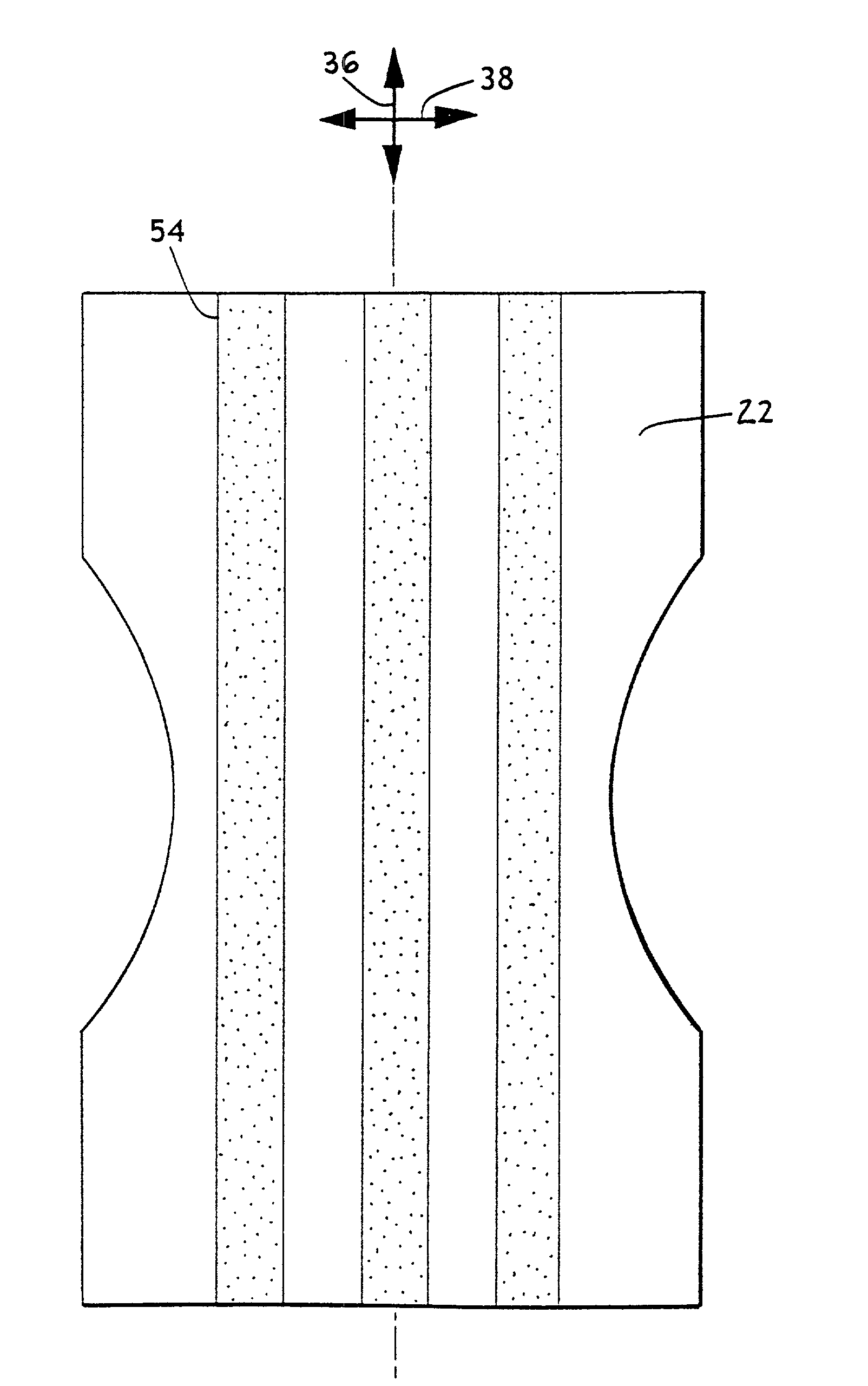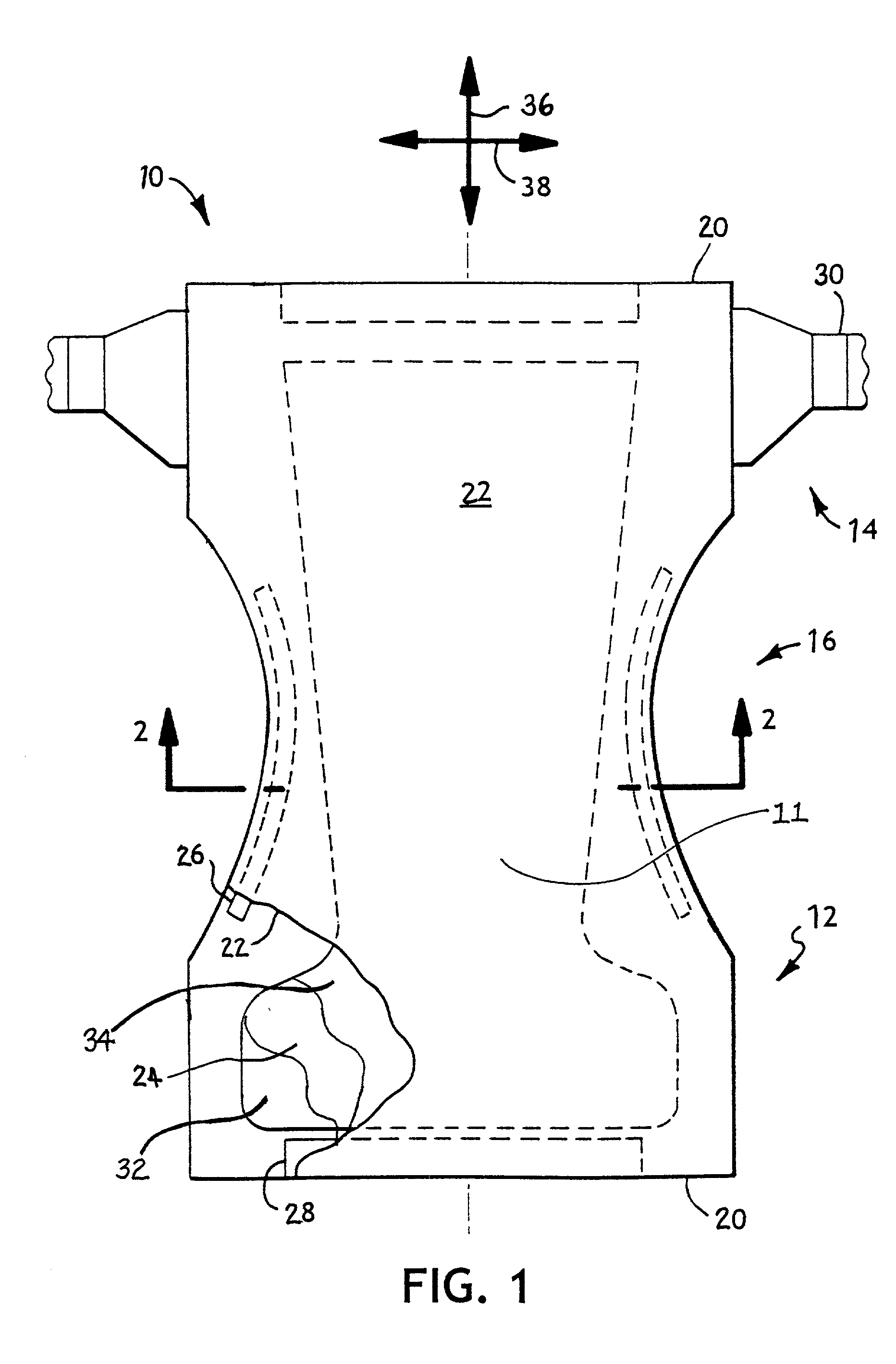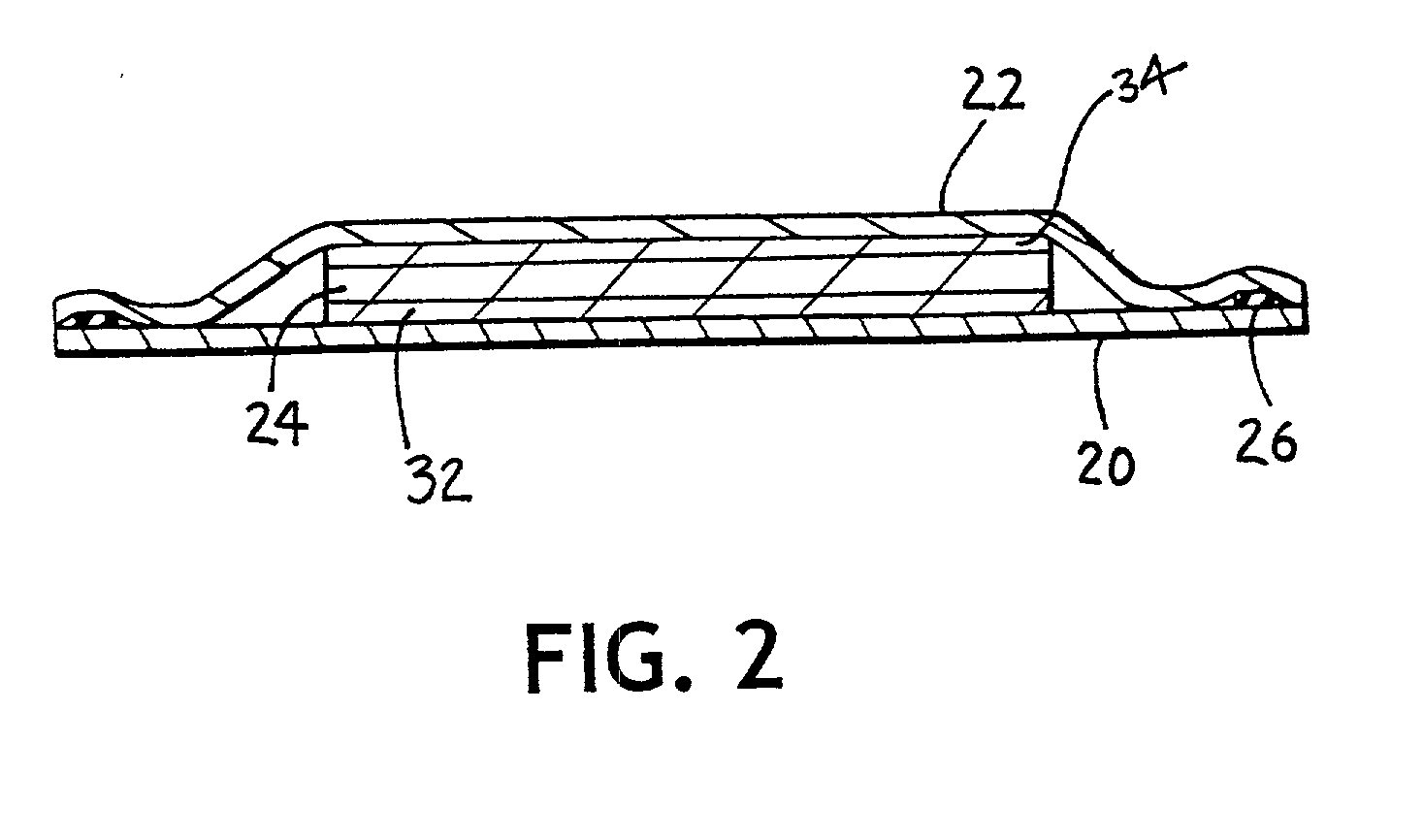Absorbent articles with non-aqueous compositions containing anionic polymers
a technology of anionic polymers and absorbent articles, which is applied in the field of absorbent articles with non-aqueous compositions containing anionic polymers, can solve the problems of compositions that compromise or delay the repair of barrier, other layers of skin can be injured and have a response to that injury, and the stratum corneum of the skin is constantly exposed, so as to increase the viscosity, prevent settling out (separation), and increase the viscosity
- Summary
- Abstract
- Description
- Claims
- Application Information
AI Technical Summary
Benefits of technology
Problems solved by technology
Method used
Image
Examples
Embodiment Construction
[0055] The present invention is directed to solving problems related to protecting the skin barrier and subduing inflammatory response when the skin is exposed to causes of physical and biological damage. Similarly, the present invention is directed to solving problems related to the prevention and treatment of diaper rash.
[0056] The present disclosure of the invention will be expressed in terms of its various components, elements, constructions, configurations, arrangements and other features that may also be individually or collectively referenced by the term, "aspect(s)" of the invention, or other similar terms. It is contemplated that the various forms of the disclosed invention may incorporate one or more of its various features and aspects, and that such features and aspects may be employed in any desired, operative combination thereof.
[0057] It should also be noted that when employed in the present disclosure, the terms "comprises", "comprising" and other derivatives from the...
PUM
| Property | Measurement | Unit |
|---|---|---|
| temperature | aaaaa | aaaaa |
| shear viscosity | aaaaa | aaaaa |
| temperature | aaaaa | aaaaa |
Abstract
Description
Claims
Application Information
 Login to View More
Login to View More - R&D
- Intellectual Property
- Life Sciences
- Materials
- Tech Scout
- Unparalleled Data Quality
- Higher Quality Content
- 60% Fewer Hallucinations
Browse by: Latest US Patents, China's latest patents, Technical Efficacy Thesaurus, Application Domain, Technology Topic, Popular Technical Reports.
© 2025 PatSnap. All rights reserved.Legal|Privacy policy|Modern Slavery Act Transparency Statement|Sitemap|About US| Contact US: help@patsnap.com



